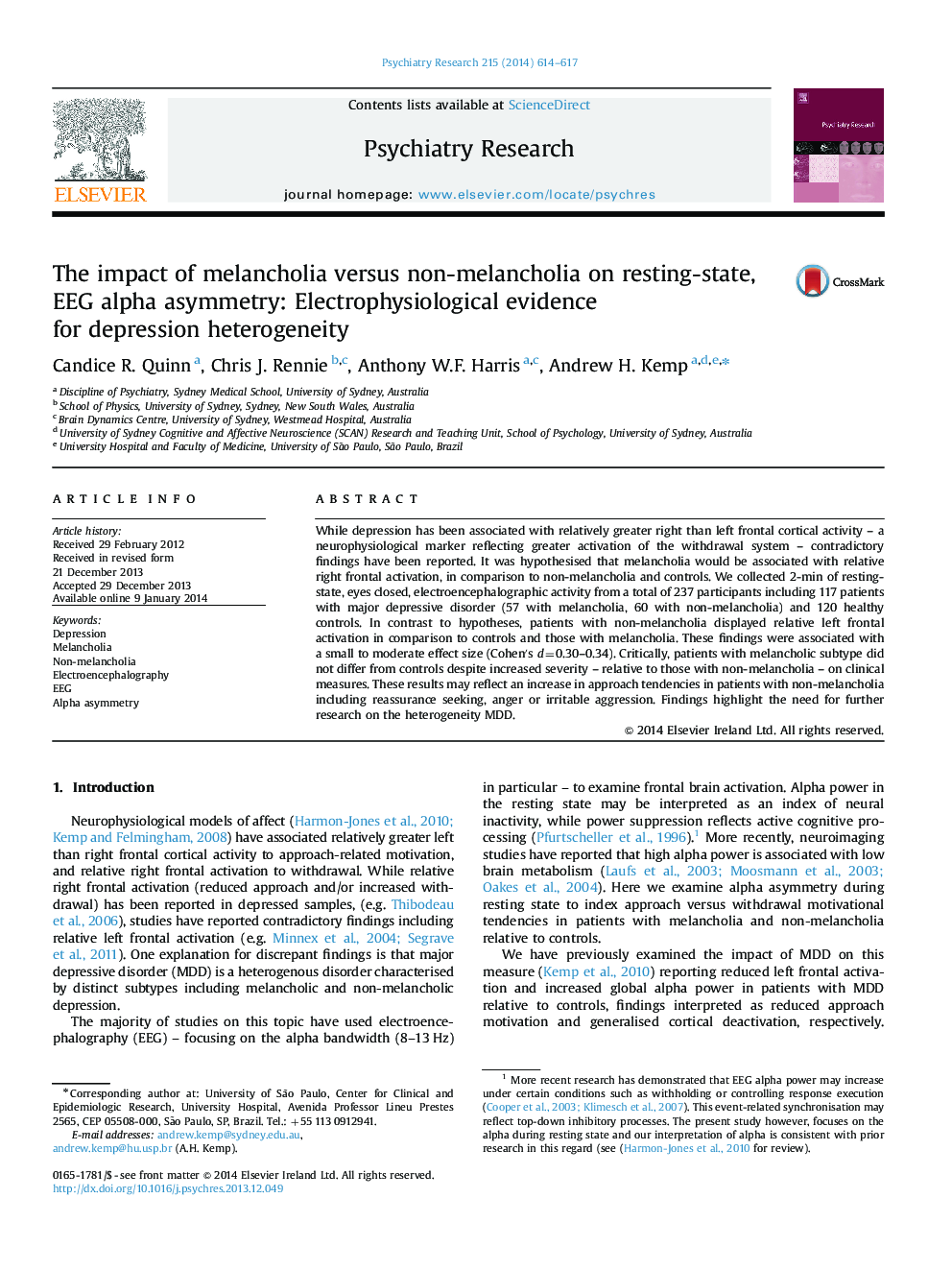| Article ID | Journal | Published Year | Pages | File Type |
|---|---|---|---|---|
| 10303885 | Psychiatry Research | 2014 | 4 Pages |
Abstract
While depression has been associated with relatively greater right than left frontal cortical activity - a neurophysiological marker reflecting greater activation of the withdrawal system - contradictory findings have been reported. It was hypothesised that melancholia would be associated with relative right frontal activation, in comparison to non-melancholia and controls. We collected 2-min of resting-state, eyes closed, electroencephalographic activity from a total of 237 participants including 117 patients with major depressive disorder (57 with melancholia, 60 with non-melancholia) and 120 healthy controls. In contrast to hypotheses, patients with non-melancholia displayed relative left frontal activation in comparison to controls and those with melancholia. These findings were associated with a small to moderate effect size (Cohen's d=0.30-0.34). Critically, patients with melancholic subtype did not differ from controls despite increased severity - relative to those with non-melancholia - on clinical measures. These results may reflect an increase in approach tendencies in patients with non-melancholia including reassurance seeking, anger or irritable aggression. Findings highlight the need for further research on the heterogeneity MDD.
Related Topics
Life Sciences
Neuroscience
Biological Psychiatry
Authors
Candice R. Quinn, Chris J. Rennie, Anthony W.F. Harris, Andrew H. Kemp,
